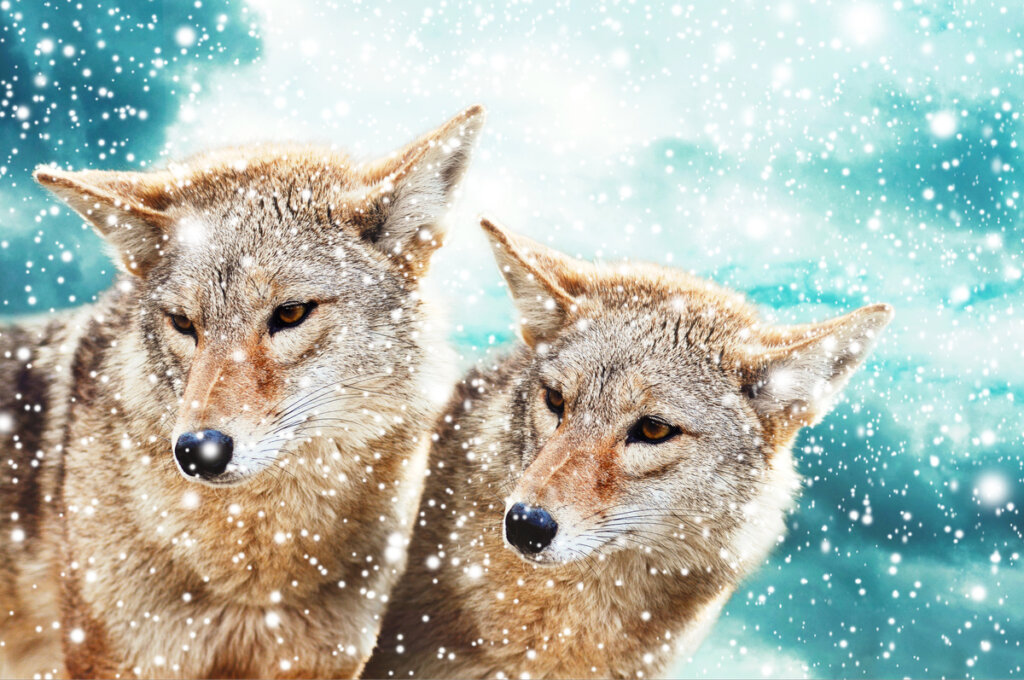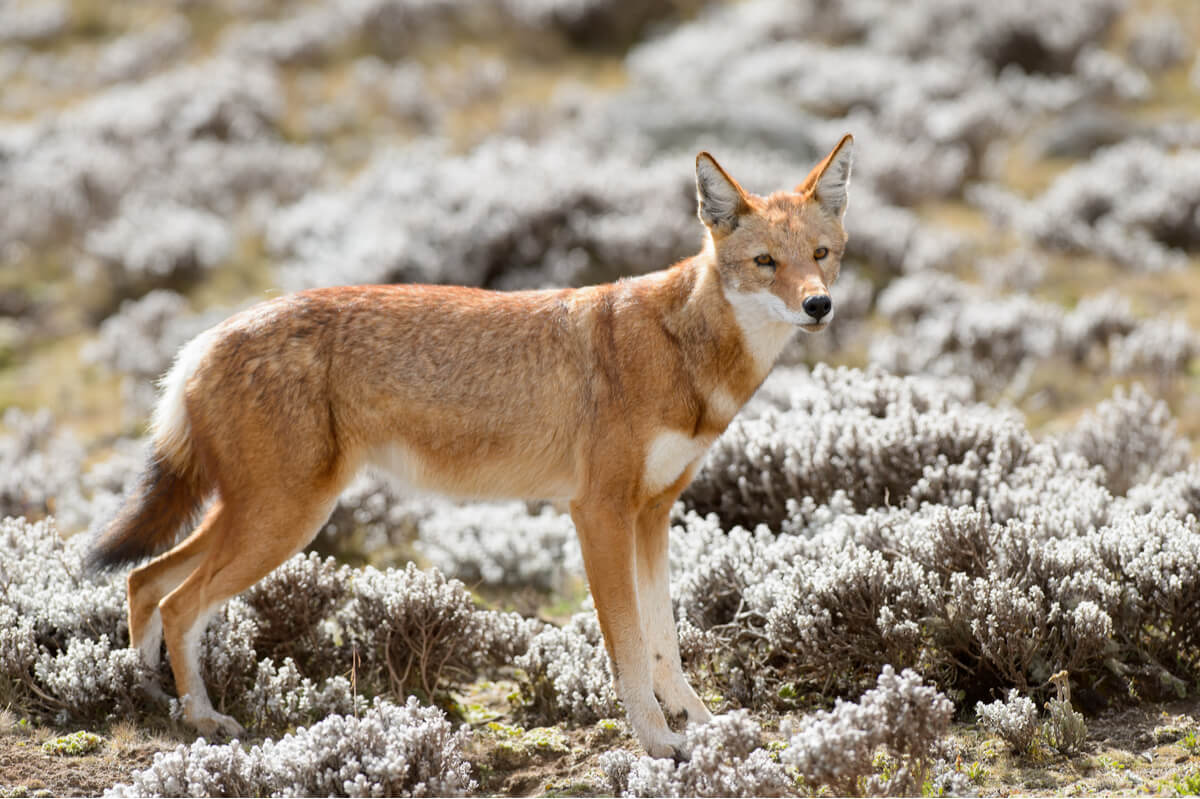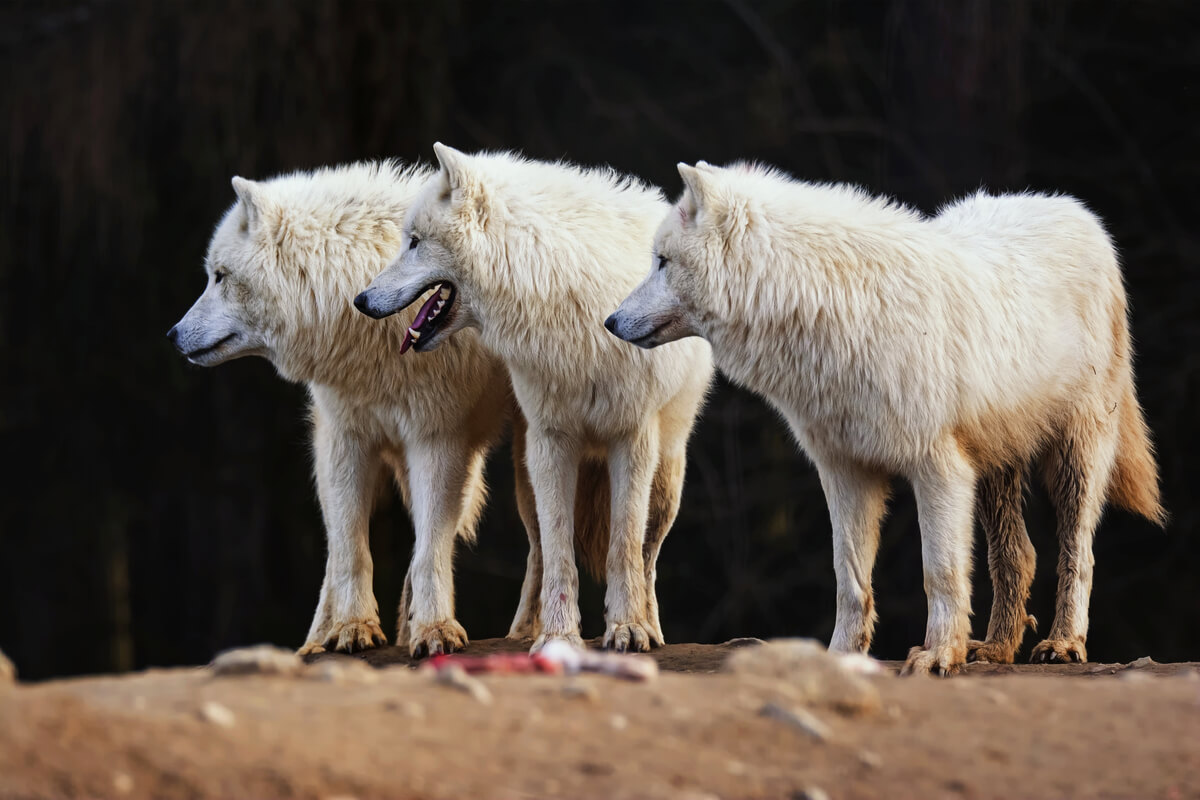Types of Wolves and Their Characteristics

Cattle rustlers, demons, and other disrespectful names have been used since the Middle Ages to describe these beautiful canids. However, there are also many who insist that the general public should learn about the different types of wolves and their biology so that they can appreciate what they’re really like.
Following this line, here you’ll find a general description of this taxonomic family and its most representative species. Don’t miss it, because these mammals are impressive, beautiful, and, above all, worthy of respect. Let’s get stuck in!
Taxonomy and characteristics of the wolf
The wolf is a mammal belonging to the carnivore order and the canid family. The earliest fossil record of the Canis lupus (its scientific name) dates back 800,000 years. They’re top predators that have adapted to this mode of feeding over the years, as indicated by their highly developed canines, their simple digestive system, and their masseters, the muscles that close their mouths.
The weight and size of the wolf vary according to the subspecies being examined. This species was once widespread in Eurasia and North America and has been sadly decimated by humans to the present day. Nowadays, it’s still the most widespread canid in the world, although the territory they occupy is much smaller.
As for the types of wolves, there are several controversies when it comes to classifying them. Broadly speaking, there are 4 groups:
- White wolves: These live in Alaska and the arctic region of Europe.
- Red wolves: These inhabit pre-desert areas of Eurasia.
- Gray wolf: Canis lupus pambasileus, in Alaska.
- Brown wolves: These can be observed in the Iberian Peninsula and Eurasia.

Types of wolves: the most representative subspecies
There are several proposals when classifying wolf subspecies. The numbers range from 16 of them to 32, so here you will find the most representative examples of Canis lupus. Don’t miss anything about these wonderful animals.
The gray wolf (Canis lupus)
This species is mainly distributed in the United States and many of the subspecies known today descend from it.
Iberian wolf (Canis lupus signatus)
This subspecies of the gray wolf is endemic to the Iberian Peninsula and is in vulnerable conservation status (although the controversy over its census and the attempts to allow its extermination by local authorities cannot be ignored). It feeds on small mammals and birds, as well as animals considered “farm animals”, such as sheep and goats.
Arctic wolf (Canis lupus arctos)
The Arctic wolf is endemic to Canada and Greenland. Despite living in an extremely cold environment, its size is somewhat smaller than that of other subspecies, weighing up to 45 kilograms (100 pounds). Their thick white fur protects them from low temperatures.
Arabian wolf (Canis lupus arabs)
Another type of wolf that can be found around the world is the Arabian wolf. It once populated the entire Arabian Peninsula, but now lives only in small areas of southern Israel, Iraq, Oman, Yemen, Jordan, Saudi Arabia and parts of the southern Sinai Peninsula in Egypt.
It’s a solitary animal (rarely seen in groups of up to 12 individuals) and has the curiosity that it doesn’t howl. It feeds mainly on small ungulates, rodents, and lagomorphs.
Eurasian wolf (Canis lupus lupus)
Its name describes its extension throughout both the European and Asian continents. It’s one of the largest subspecies, reaching up to 70 kilograms (155 pounds).
Tundra wolf (Canis lupus albus)
This is another type of wolf that inhabits cold areas. As its name indicates, it can be found in the Russian tundra and also in Siberia. It’s a nomadic species that hunts migratory animals in its area in order to feed.
Mexican wolf (Canis lupus baileyi)
This North American canid is considered extinct in the wild. Its range (before the reduction of its population) expanded from the Sonoran Desert, Chihuahua, and central Mexico to western Texas, southern New Mexico and central Arizona.
Several efforts have been made to conserve this species. In 2017, the first wolf born in the wild managed to mate and raise a healthy litter.
Baffin Island wolf (Canis lupus manning)
Continuing with endemic and rare species, the Baffin Island wolf inhabits only Baffin Island, Canada. It’s the smallest of the Arctic wolves and is speculated to have originated from northern Greenland. They’re rarely found in packs.
Yukon wolf (Canis lupus pambasileus)
This is one of the largest wolves in the world, weighing up to 70 kilograms (155 pounds). It lives in Yukon, a province of Alaska, and is organized in small packs of up to 8 individuals. Its population is threatened by distemper and rabies diseases.
Dingo (Canis lupus dingo)
The dingo is another type of wolf found outside the European and American continents. This one, in fact, inhabits Australia and some parts of Asia. It’s smaller than its taxonomic cousins, weighing about 32 kilograms (70 pounds) on average.
The dingo’s coat has a uniform color that varies between reddish and yellow; likewise, individuals with albinism can also be found
Vancouver island wolf (Canis lupus crassodon)
This wolf is endemic to Vancouver Island, Canada, and is in danger of extinction. Its fur, white or grayish depending on the season, lives in large packs of up to 35 individuals. Further study of this species is needed to protect them, as they rarely come into contact with humans.

Northwestern Wolf (Canis lupus occidentalis)
Their range extends from the mouth of the Mackenzie River in the Arctic Ocean to the northwestern United States. They’re quite tall (about 85 centimeters – 2.8 feet – to the withers), but slender. They feed on large herbivores that hunt in packs and small mammals and birds.
As you can see, these incredible types of wolves (and all those we don’t have space to mention) are one more survivor of nature, beautiful and deep-eyed, trying to live in a world that’s getting smaller and smaller for them. Let’s respect them, take care of them, and live together in peace.
All cited sources were thoroughly reviewed by our team to ensure their quality, reliability, currency, and validity. The bibliography of this article was considered reliable and of academic or scientific accuracy.
- Ferguson, A. D. H. (2019). [Re] animating Predator Conservation: Linking Perspectives on the Reintroduction of the Mexican Gray Wolf (Canis lupus baileyi). Arizona State University.
- Scott, B. M. V. (1979). The Vancouver Island wolf (Canis lupus crassodon): an initial study of food habits and social organization (Doctoral dissertation, University of British Columbia).
- Canis lupus (gray wolf). (s. f.). Animal Diversity Web. Recuperado 6 de junio de 2022, de https://animaldiversity.org/accounts/Canis_lupus/